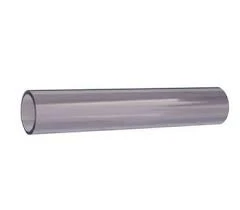Aug . 21, 2024 13:56 Back to list
High-Density Polyethylene Conduit Pipe Applications and Benefits for Electrical Installations
Understanding HDPE Conduit Pipes Advantages and Applications
High-Density Polyethylene (HDPE) conduit pipes have gained significant traction in various industries due to their robust properties and versatile applications. As a thermoplastic polymer, HDPE is known for its high strength-to-density ratio, making it an ideal material for pipes used in a wide range of settings, from telecommunications to electrical utilities.
What is HDPE Conduit Pipe?
HDPE conduit pipe is specifically designed for the installation and protection of electrical and telecommunications cables. It is manufactured from high-density polyethylene resin, which provides enhanced durability compared to traditional materials such as metal or PVC. The pipes are available in different sizes and configurations, catering to diverse project requirements.
Advantages of HDPE Conduit Pipes
1. Durability and Longevity One of the standout features of HDPE pipes is their resistance to corrosion and chemical damage. Unlike metal conduits that can rust over time, HDPE conduits maintain their structural integrity and performance for decades, making them a cost-effective long-term investment.
2. Lightweight and Flexible HDPE conduit pipes are significantly lighter than traditional materials, which makes them easier to handle and install. Their flexibility allows for bending and maneuvering in tight spaces, reducing the need for additional fittings and joints, which can be potential weak points in the system.
3. Hydraulic Properties The smooth interior surface of HDPE pipes minimizes friction losses, resulting in improved flow characteristics. This property is particularly beneficial in applications involving the transport of fluids.
4. Environmental Resistance HDPE is resistant to various environmental factors, including UV radiation and extreme temperatures. This characteristic allows HDPE conduits to be installed above ground or underground without fear of degradation, expanding their potential installation scenarios.
5. Ease of Installation The lightweight nature of HDPE conduit facilitates quick and easy installation without the need for heavy lifting equipment. Additionally, the use of fusion welding techniques for joining sections of HDPE ensures a strong and leak-free connection.
hdpe conduit pipe

6. Cost-Effectiveness Although the initial investment in HDPE conduit may be higher than some alternatives, the savings accrued from reduced maintenance costs, longer lifespan, and quicker installation often outweigh these initial expenses.
Applications of HDPE Conduit Pipes
HDPE conduit pipes are utilized across various sectors
- Telecommunications They are widely used to house fiber optic cables and other communication lines, protecting them from environmental exposure and physical damage.
- Electrical Utilities HDPE conduits are essential for protecting electrical cables, ensuring that power distribution systems are safe and reliable.
- Utility Infrastructure Municipalities utilize HDPE conduits for water and gas pipelines, capitalizing on their durability and resistance to harsh environmental conditions.
- Industrial In industrial settings, HDPE conduits can be used to transport various substances, including corrosive chemicals, without the risk of leaks or contamination.
Conclusion
HDPE conduit pipes are becoming the go-to choice for many industries seeking reliable, durable, and cost-effective solutions for cable management and protection. With their myriad advantages—ranging from lightweight, flexibility, and cost savings to their environmental resistance—their application is only expected to grow in the coming years. Companies and municipalities investing in HDPE conduits are not only bolstering their infrastructure with modern technology but are also contributing to a more sustainable and efficient future. As technology progresses, the uses and innovations related to HDPE conduits will likely expand, solidifying their place in modern engineering and construction practices.
-
PVC Grey Sheet for Extraction: Chemical Resistant & Durable
NewsAug.19,2025
-
Durable PVC Pipe Fittings for Plumbing & Irrigation Needs
NewsAug.18,2025
-
HDPE Steel Belt Reinforced Spiral Corrugated Pipe | High Strength
NewsAug.17,2025
-
HDPE Pipe Fittings: Durable, Leak-Proof Solutions
NewsAug.16,2025
-
Premium CPVC Sheet: High-Temp & Chemical Resistant Solutions
NewsAug.15,2025
-
Durable PPR Pipe for Hot & Cold Water Systems - Easy Install
NewsAug.14,2025

